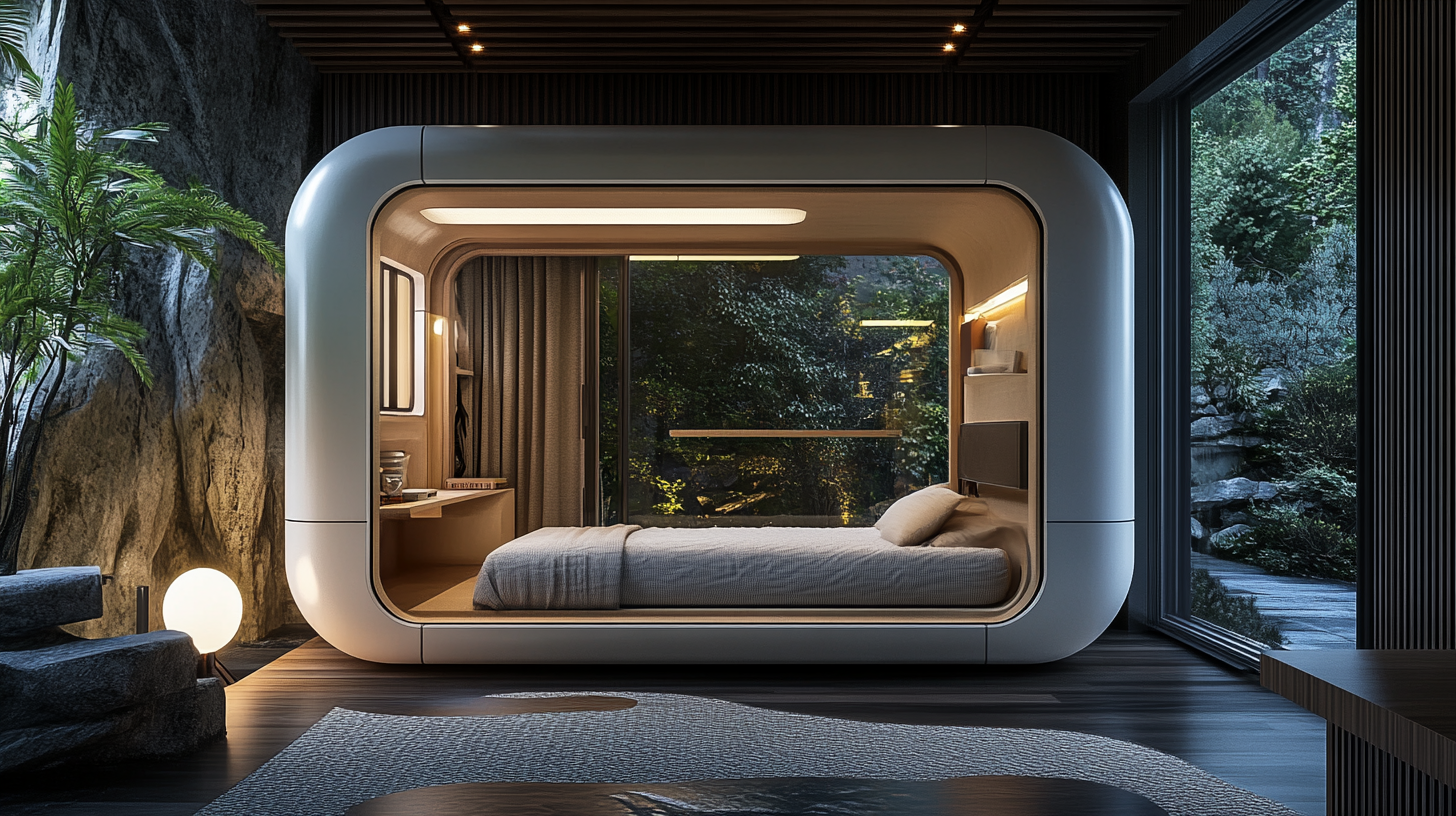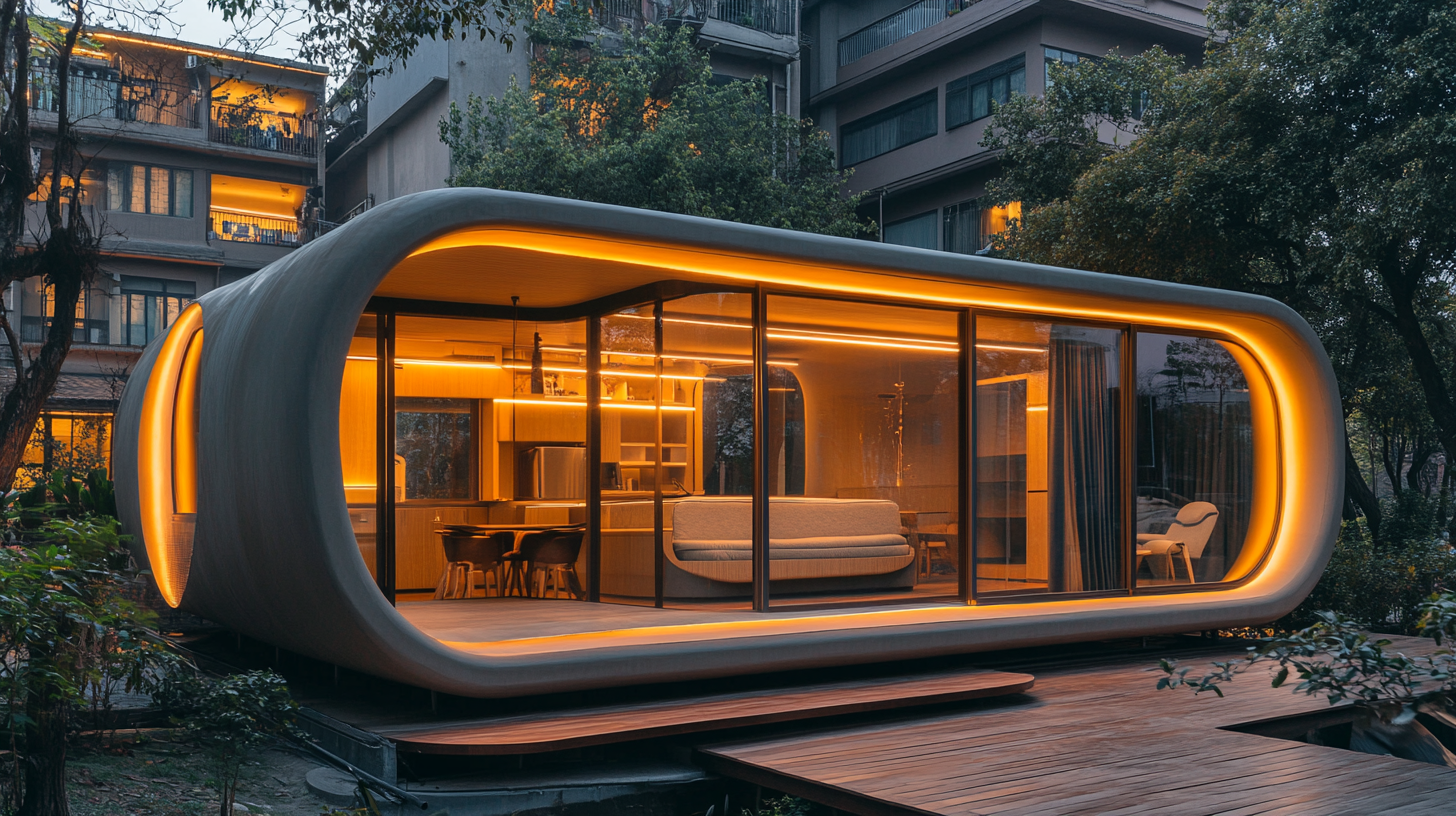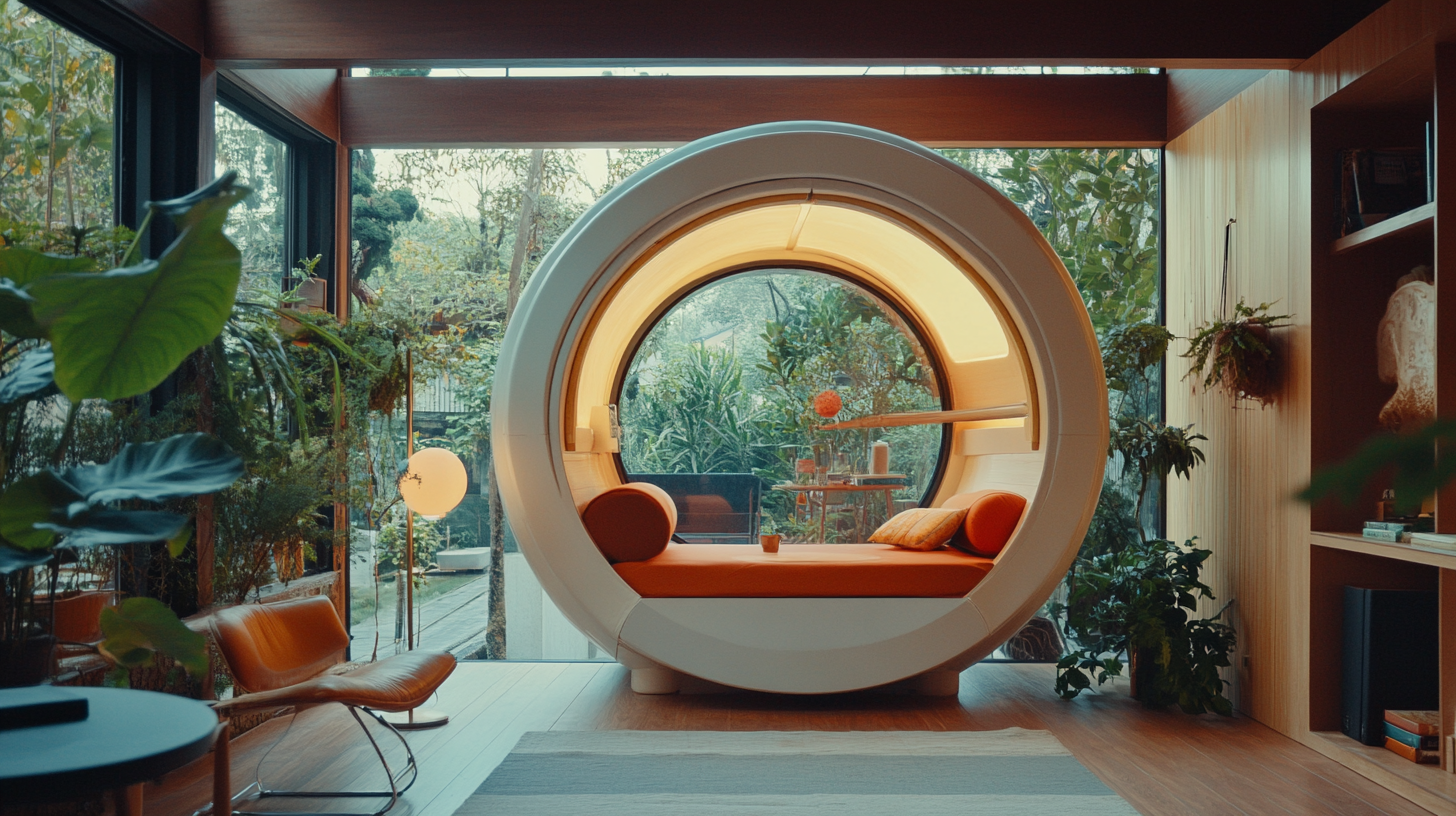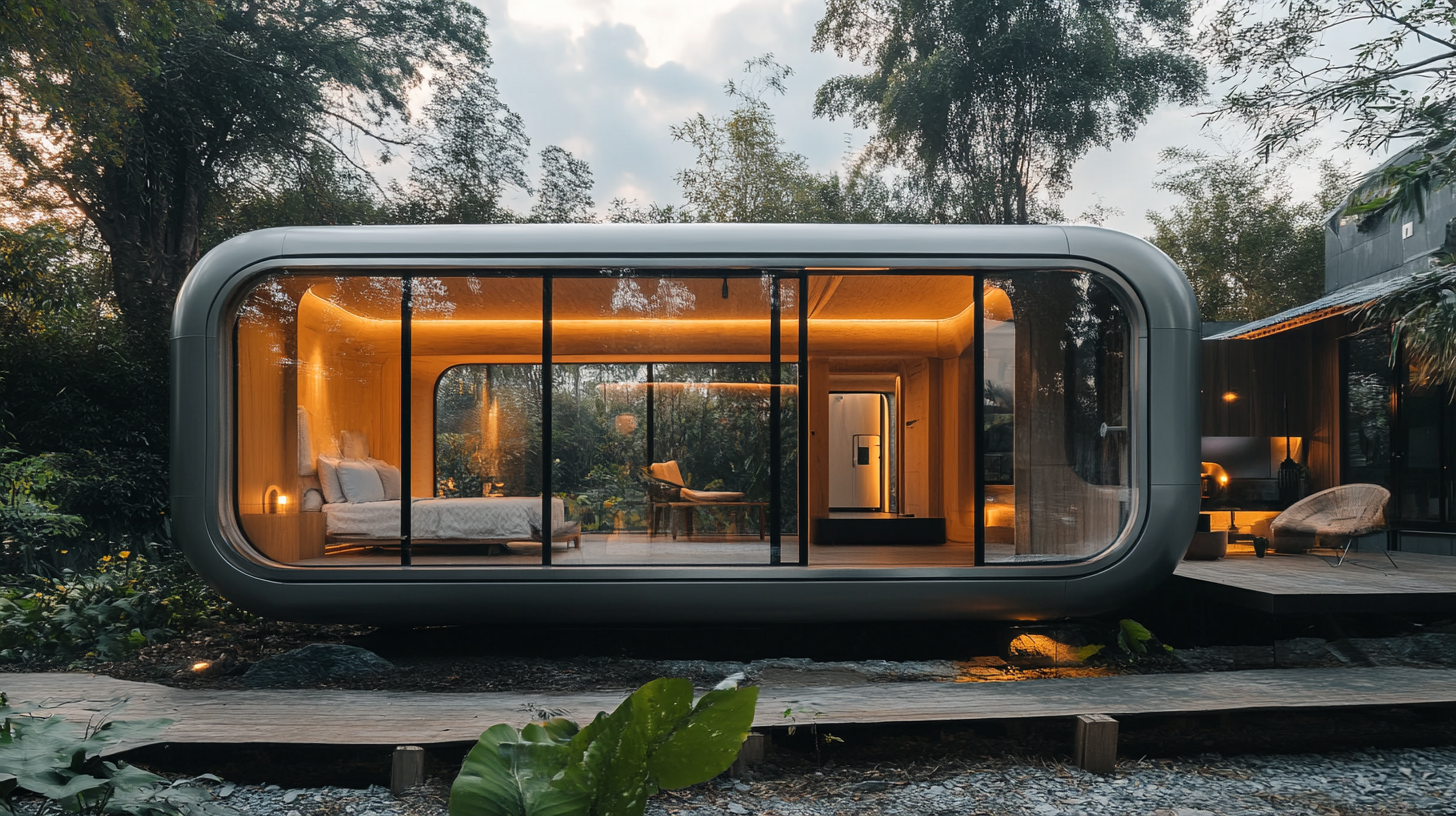
News
Understanding the Benefits of a Chinese Capsule House for Modern Living
As urbanization continues to reshape our living environments, innovative housing solutions are becoming increasingly essential. One of the most captivating developments in modern architecture is the "Chinese Capsule House," which encapsulates the need for efficiency, sustainability, and affordability in rapidly growing cities. According to a report by the United Nations, over 55% of the world's population currently resides in urban areas, a figure that is expected to rise to 68% by 2050. This demographic shift underscores the urgency of exploring alternative housing models that can meet the demands of urban dwellers—especially in densely populated regions like China.
The Chinese Capsule House offers a unique answer to these challenges by providing compact living spaces that maximize utility without compromising on comfort. Recent research from the China Urbanization Development Report highlights that micro-housing models, such as the Chinese Capsule House, could potentially reduce urban housing costs by up to 30%. These innovative structures not only promote efficient use of space but also align with the growing trend towards minimalist lifestyles, making them an attractive option for young professionals and students. As we delve deeper into the benefits of the Chinese Capsule House, we will discover how it represents a pivotal step towards sustainable modern living and a response to the complexities of urban challenges.

The Innovative Architecture of Chinese Capsule Houses
The innovative architecture of Chinese capsule houses embodies a fusion of modern minimalism and functional design, catering to the ever-evolving needs of urban dwellers. With an increasing population and limited urban space, this compact living solution has gained momentum. Recent statistics indicate that over 50% of the global population now resides in urban areas, a figure expected to reach 68% by 2050, according to the United Nations. In densely populated cities, these capsule houses provide a viable alternative to traditional apartments, maximizing available space without compromising on essential amenities. Structurally, Chinese capsule houses utilize modular design principles, allowing for swift construction and easy relocation. This approach not only reduces the environmental footprint associated with conventional building methods but also offers flexibility to residents. A report from the International Institute of Sustainable Development highlights that modular construction can decrease project timeframes by up to 50%, showcasing the efficiency of these innovative dwellings. Furthermore, capsule houses often feature sustainable materials and energy-efficient systems, aligning with the increasing demand for eco-friendly living spaces. Design-wise, capsule houses prioritize functionality and aesthetic appeal, often integrating smart technology to enhance the living experience. According to a market research report by Grand View Research, the global smart home market is anticipated to reach USD 174 billion by 2025. By incorporating smart features, such as automated lighting and climate control, capsule houses not only cater to the tech-savvy population but also enhance energy efficiency. This innovative architecture is a testament to how modern living can be redefined, offering comfort and convenience in a compact format.

Space Efficiency: How Capsule Homes Maximize Living Areas
In an age where urban living often means sacrificing space for convenience, capsule homes emerge as a revolutionary solution to the growing challenge of space efficiency. These compact housing units are designed to maximize every square foot, making them ideal for modern dwellers who seek functionality without compromising on comfort. Utilizing innovative designs and materials, Chinese capsule houses transform the concept of living space, allowing residents to experience a minimalist yet fulfilling lifestyle.
One of the standout features of capsule homes is their multi-functional design. Each unit is often equipped with essential amenities that are cleverly integrated to save space. For instance, foldable furniture, hidden storage solutions, and open layouts create an illusion of more room, while also providing all necessary living essentials. This approach not only enhances the usability of the space but also encourages a lifestyle centered around simplicity and sustainability.
Moreover, the rise in capsule living resonates perfectly with the increasing demand for affordable housing solutions. As land prices skyrocket in urban centers, these space-efficient homes offer an economical alternative, appealing to young professionals, students, and those looking to downsize. By rethinking conventional architecture, Chinese capsule houses showcase how innovative design can lead to improved quality of life, wherein ease of maintenance and lower living costs become an attractive reality for many.

Sustainability and Environmental Impact of Capsule Living
As urbanization continues to rise, the concept of capsule living has emerged as an innovative solution to modern housing challenges. One of the most significant aspects of this trend is its emphasis on sustainability and minimal environmental impact. According to a report by the United Nations, urban areas are expected to house 68% of the world's population by 2050, leading to increased energy consumption and waste generation. Capsule houses, with their compact designs, can significantly reduce resource use, offering a pathway to more sustainable urban living.
Capsule houses are engineered with eco-friendly materials and efficient energy systems, contributing to lower carbon footprints. Data from the International Energy Agency indicates that buildings account for nearly 40% of global energy-related CO2 emissions. By utilizing renewable energy sources, such as solar panels, and integrating energy-efficient appliances, capsule homes can curtail energy consumption by up to 30% compared to traditional housing. This shift not only benefits the environment but also helps residents reduce their utility bills.
Moreover, innovative design choices in capsule living facilitate efficient waste management and water conservation. For instance, a study from the World Green Building Council highlights that sustainable buildings can reduce water usage by 30-50%. Capsule homes often incorporate greywater recycling systems and low-flow fixtures, which diminish overall water consumption and promote responsible resource use. Therefore, the rise of capsule housing not only provides a sustainable alternative to conventional living spaces, but it also fosters a community-oriented approach, encouraging residents to be more mindful of their environmental impact.

Cost-Effectiveness: Affordable Living Solutions with Capsule Houses
The rising costs of living in urban areas have led many to rethink their housing solutions, with Chinese capsule houses emerging as a highly cost-effective option for modern lifestyles. These compact and cleverly designed living spaces provide residents with a unique opportunity to maximize utility without breaking the bank. By optimizing the use of limited square footage, capsule houses enable individuals to enjoy a comfortable living environment while minimizing overhead expenditures.
One of the most appealing aspects of capsule houses is their affordability. These structures are typically constructed with efficient materials, reducing overall construction costs. Moreover, their smaller footprint means lower utility bills for occupants, making them an attractive solution for those seeking to live independently or downsize. As urban living spaces become increasingly expensive, capsule houses offer a practical and innovative alternative that caters to budget-conscious individuals and families.
In addition to their cost-effectiveness, capsule houses appeal to those prioritizing sustainability. Their smaller size typically results in reduced energy consumption, contributing to a lower carbon footprint. This aligns with the growing trend toward environmentally friendly living. By choosing a capsule house, residents not only save money but also support a lifestyle that emphasizes minimalism and sustainability, making it an ideal choice for modern living.
The Future of Urban Living: Embracing the Capsule House Trend
The future of urban living is increasingly being defined by innovative solutions to space and affordability, and the capsule house trend exemplifies this shift. As urban populations continue to grow—projected to reach 68% by 2050 according to the United Nations—cities are facing unprecedented housing demands. In response, the concept of capsule houses is emerging as a viable alternative, offering compact, efficient living spaces that cater to the needs of modern inhabitants without sacrificing style or comfort.
Recent studies from the International Energy Agency indicate that sustainable living options, like capsule houses, can significantly reduce urban carbon footprints. These structures, typically ranging from 100 to 300 square feet, utilize space in a manner that allows for minimal energy consumption while maximizing functional living area. Furthermore, statistics from the Urban Land Institute reveal that nearly 45% of millennials prefer smaller homes that require less maintenance and investment, positioning capsule houses as an attractive choice for this demographic.
Moreover, the design of capsule houses integrates smart technologies to enhance living conditions while keeping external impacts low. Features such as multifunctional furniture and energy-efficient appliances promote a lifestyle that aligns with modern environmental consciousness. By embracing the capsule house trend, urban dwellers are not only making economically sound decisions but are also contributing to a more sustainable future in urban living, positioning them at the forefront of the evolving architectural landscape.

